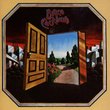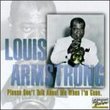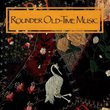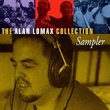| Title: Anthem De Danann Artist: De Danann Date: 1/31/2012 |
The Irish musical group De Danann (sometimes spelled De Dannan) was noted for launching the careers of three of Ireland's most popular female singers - Mary Black, Dolores Keane and Maura O'Connell. This album was a sort of reunion in that it brought all three beautiful voices together on the same album. As with other albums by this band, there is a mix of vocal and instrumental tunes. Mary Black and Dolores Keane have a couple of songs each, and they alternate the verses on Diglake Fields. Maura O'Connell contributes backing vocals on one song.
Review Date: 1/31/2012
| Title: Bruce Cockburn Artist: Bruce Cockburn Label: Sony Date: 1/10/2009 |
1 of 1 member(s) found this review helpful.
Cockburn's first album - not recommended for those who are new to his music, it is not his best work. If you are a fan already, you may want this.
Review Date: 1/10/2009
| Title: Citizen Kane / Jane Eyre / Devil & Daniel Webster Artist: Cinema Gala Label: Polygram Records Date: 1/21/2011 |
Includes suites from:
Citizen Kane
The Snows of Kilimanjaro
Jane Eyre
Jason and the Argonauts
The Devil and Daniel Webster
Review Date: 1/21/2011
| Title: Clarinet Quartet / Echoes String Quartet Artist: Herrmann, Hill, Amici Quartet Label: Unicornio Cuba Date: 1/21/2011 |
Two chamber works by Bernard Herrmann:
"Echoes" for string quartet, written in 1966, performed by the Amici Quartet.
"Souvenirs de Voyage" for clarinet & string quartet, written in 1967, performed by Robert Hill with the Ariel Quartet.
Review Date: 1/21/2011
1 of 1 member(s) found this review helpful.
Interior was a Japanese group, whose music was instrumental and mostly electronic. They had two albums on the Windham Hill label, "Interiors" released in 1985, and this album released in 1987. They were a bit of a departure for Windham Hill not only because of their electronic sound, but also because their music had something of a techno/industrial feel, although some tracks have a more lyrical quality.
Review Date: 2/1/2012
| Title: Film Fantasy / Great Film Scores Artist: Herrmann, New Philharmonia Orchestra Label: Polygram Records Date: 1/21/2011 |
1 of 1 member(s) found this review helpful.
Film scores by Bernard Herrmann. Includes suites from:
Journey to the Center of the Earth
The 7th Voyage of Sinbad
Fahrenheit 451
The Day the Earth Stood Still
Review Date: 1/21/2011
| Title: Please Don't Talk About Me When I'm Gone Artist: Louis Armstrong Label: Delta Original Release Date: 4/21/1997 Date: 1/10/2009 |
This is a strange recording - Armstrong hardly seems to appear in it at all. Only suggested for completists or jazz historians.
Review Date: 1/10/2009
| Title: Rounder Old-Time Music Artist: Various Artists Label: Rounder Date: 6/11/2009 |
If you look up this item on Amazon, it will tell you "This item has been discontinued by the manufacturer". Actually, you can order it direct from www.rounder.com.
Review Date: 6/11/2009
| Title: Song for Ireland Artist: De Dannan Label: Sugarhill Date: 1/31/2012 |
Features the beautiful voice of Mary Black on the vocal numbers, making it one of De Dannan's best recordings in my opinion.
Review Date: 1/31/2012
| Title: Southern Journey Sampler Artist: Various Artists Label: Rounder Select Date: 6/11/2009 |
If you look up this item on Amazon, it will tell you "This item has been discontinued by the manufacturer". Actually, you can order it direct from www.rounder.com.
Review Date: 6/11/2009
| Title: Symphony / Fantasticks Artist: Herrmann, Npo Label: Unicorn (U.K.) Date: 1/21/2011 |
Two works by Bernard Herrmann, performed by the National Philharmonic Orchestra, conducted by the composer.
Although titled Symphony No 1, this turned out to be his only work in the medium. The lengthy first movement is surprisingly anonymous, certainly lacking in any of Herrmann's more distinctive trademarks. However, the composer becomes more obvious in the lively, dance like Scherzo, whose slightly demonic nature unsurprisingly recalls some of the more spirited episodes in Herrmann's Oscar winning score to The Devil and Daniel Webster. Herrmann rarely seemed happy to write anything especially soothing and the initially placid slow 3rd movement ultimately becomes turbulent, although returning to quiet before the bracing 4th movement. A surprisingly rousing and rugged fanfare theme announces the final movement, which hints more at Herrmann's earlier more American style, even if the quieter interludes are more typical of the composer, a lovely oboe melody reminiscent of The Ghost and Mrs Muir for example.
The Fantasticks is an excerpt from a longer song cycle setting to music the words of Nicholas Breton. Despite the picturesque words, the music starts fairly austerely, certainly for the first couple which are icy - appropriate I suppose - but hard going. March takes the material into a more sprightly place before the violin trill backed lullaby of April and the delightfully sunny, choral May that occasionally echoes Debussy. One assumes that the cycle moves through the sunniness of summer through more autumnal shades back to winter, but sadly the remaining months are not included so as the work takes flight, it concludes.
The performance of the Symphony is generally fine, if perhaps a little rugged in places. The slightly rough recording, with some distortion on the louder percussion hits, doesn't help. However, The Fantasticks fairs better with a lighter performance and a good balance between soloists, choir and orchestra. It is surprising that Herrmann's usually unmistakable sound isn't always apparent, but that makes them no less worthy and coupled with the interesting liner note, the album should be of interest to those keen on Herrmann and American concert music in general.
Review Date: 1/21/2011
1 to 11 of 11





